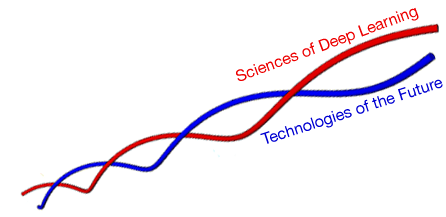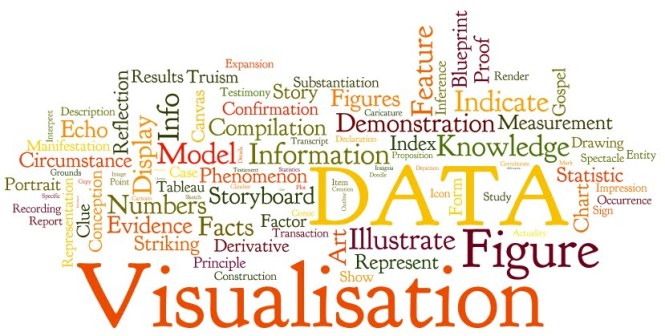You may not know who Tim Berners-Lee is. Hang on…

You do know what the World Wide Web is?
Sir Timothy John Berners-Lee OM KBE FRS FREng FRSA FBCS, also known as TimBL, is an English engineer and computer scientist, best known as the inventor of the World Wide Web. He is currently a professor of computer science at the University of Oxford and the Massachusetts Institute of Technology.
Sir Tim Berners-Lee invented the World Wide Web in 1989.
But wait, there is more.
He is the Director of the World Wide Web Consortium (W3C), a Web standards organization founded in 1994 which develops interoperable technologies (specifications, guidelines, software, and tools) to lead the Web to its full potential. He is a Director of the World Wide Web Foundation which was launched in 2009 to coordinate efforts to further the potential of the Web to benefit humanity.
A graduate of Oxford University, Sir Tim invented the Web while at CERN, the European Particle Physics Laboratory, in 1989. He wrote the first web client and server in 1990. His specifications of URIs, HTTP and HTML were refined as Web technology spread.
He is the 3Com Founders Professor of Engineering in the School of Engineering with a joint appointment in the Department of Electrical Engineering and Computer Science at the Laboratory for Computer Science and Artificial Intelligence ( CSAIL) at the Massachusetts Institute of Technology (MIT) where he co-leads the Decentralized Information Group (DIG). He is also a Professor in the Computer Science Department at the University of Oxford, UK. He is President of and founded the Open Data Institute in London.
In 2011 he was named to the Board of Trustees of the Ford Foundation, a globally oriented private foundation with the mission of advancing human welfare. He is President of London’s Open Data Institute.
In 2001 he became a Fellow of the Royal Society. He has been the recipient of several international awards including the Japan Prize, the Prince of Asturias Foundation Prize, the Millennium Technology Prize and Germany’s Die Quadriga award. In 2004 he was knighted by H.M. Queen Elizabeth and in 2007 he was awarded the Order of Merit. In 2009 he was elected a foreign associate of the National Academy of Sciences. He is the author of “Weaving the Web”.
On March 18,2013, Sir Tim, along with Vinton Cerf, Robert Kahn, Louis Pouzin and Marc Andreesen, was awarded the Queen Elizabeth Prize for Engineering for “ground-breaking innovation in engineering that has been of global benefit to humanity.”
Sir Tim has promoted open government data globally and spend time fighting for rights such as net neutrality, privacy and the openness of the Web. He is not finished yet. He wants to enable a new project.

Photo by rawpixel.com on Pexels.com
ENABLING STUDENTS
These people, Vint Cerf, or Ron Brown, or George Lucas, Larry Irving . Dr. R.N. Panoff ,and Elliot Soloway,enabled new ways of learning. Teachers and technologists learned from these people and from DARPA.
The University of Illinois hosted the National Center for SuperComputing and the National Geographic helped educators to focus on projects, and then led us to GIS and ESRI. NASA had modules of learning for free, for teachers who would take the time to learn the information.

Photo by Pixabay on Pexels.com
Local mentors for teachers in Virginia? Dr. Chris Dede then at George Mason University, now at Harvard. Don Mitchell was the bridge to learning about SuperComputing and working at NSF to enable learning in education. Scott Lathrop helped educators to join learning initiatives that now are commonplace, but that then, were completely futuristic.
There were educator conferences connected to SuperComputing, the conference where educators could come and learn.Your mind would be stretched. To learn there was amazing. Think about visualization and modeling. Think about the beginnings of AI and VR.
It is called Cyberlearning.
Now we learn at different places.
There is the Center for Cyberlearning!
New technologies change what and how people learn.
Informed by learning science, cyberlearning is the use of new technology to create effective new learning experiences that were never possible or practical before. The cyberlearning movement advances learning of important content by:
Applying scientific insights about how people learn
Leveraging emerging technologies
Designing transformative learning activities
Engaging teachers and other practitioners
Measuring deeper learning outcomes
Emphasizing continuous improvement


Think GIS. The Science of Where
It can be fun learning these new ways of teaching and back in the day permission was granted by Dr. Frank Withrow, and Jenelle Leonard at the Department of Education for some programs that integrated technology use in a STEM way.We did STEM before the word was coined as a symbol for practice.
To use technology well we had to synthesis and put into practice new ways of learning and defend the use of technology.
This morning at the WashingtonPostLive program. Tim Berners-Lee walked through the history of technology.
Sadly , there are students who still have no digital inclusion.
Sir Tim Berners-Lee has new ideas for inclusion.

Photo by rawpixel.com on Pexels.com
I have been working to get children interested in learning, the use of computers , in coding and in the use of technology since it entered the learning space.The easiest entry was is using games and small projects.
Now there is this
There are many people who have inspired teachers to continue the advocacy to assist students in this type of learning. The beginning of the use of technology was relatively easy mostly because most people did not know its reach or what could be done with technology. They did know how children were drawn to learn with various utilizations of technology. We used the Internet, we used Project Based Learning with special subjects, we followed NASA initiatives and with school permission we did very well in bridging the gap between reading, learning, adding hands on science and installing technology as a special way of learning. ISTE helped teachers as a guide to best practices and even guide new practitioners.
Here is one way to go.
Code.org® is a nonprofit dedicated to expanding access to computer science in schools and increasing participation by women and underrepresented minorities. Our vision is that every student in every school has the opportunity to learn computer science, just like biology, chemistry or algebra. Code.org provides the leading curriculum for K-12 computer science in the largest school districts in the United States.

For STEM you can go to Concord.org. HERE